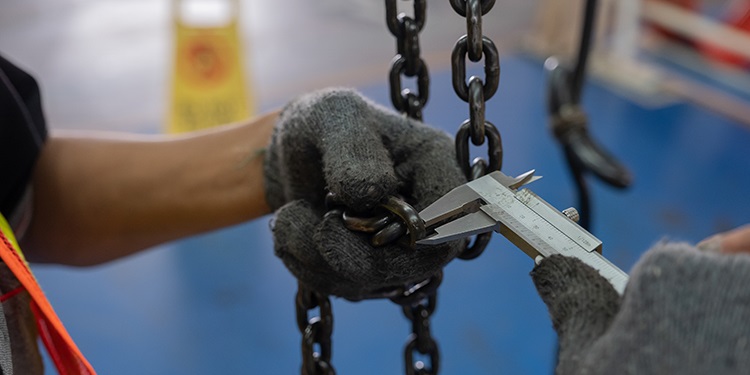
In the world of heavy lifting and industrial operations, the hoisting chain is a critical component that often bears the brunt of the work. Regular inspection of these chains isn’t just a best practice—it’s essential to ensuring safety, efficiency, and longevity in operations. Understanding the importance of this can be the difference between smooth operational success and a potentially catastrophic failure.
Why Regular Inspections are Critical
Hoisting chains are fundamental to various applications across industries, from construction and manufacturing to shipping and logistics. These chains are designed to carry heavy loads, often under challenging conditions, which can lead to wear and tear over time. Regular inspections help in several ways:
1. Safety:
This is the top priority in any operation. Regularly inspecting hoisting chains can prevent accidents caused by chain failure, protecting workers and equipment.
2. Compliance:
Many industries are governed by stringent regulations that include specific requirements for equipment maintenance, including hoisting chains. Regular inspections ensure compliance with these regulations.
3. Efficiency and Reliability:
Detecting issues early through inspections can prevent unexpected downtime, ensuring operations run smoothly and reliably.
4. Cost Savings:
Identifying and addressing potential problems early can prevent more significant, costly repairs or replacements down the line.
Signs of Wear and When to Inspect
Knowing what to look for during inspections can help identify when a hoisting chain requires maintenance or replacement. Key signs of wear include:
- Stretching or elongation of the chain links
- Cracks or breaks in any part of the chain
- Signs of corrosion or rust
- Excessive wear on chain links or hooks
While regular inspections should be part of your maintenance schedule, additional checks should be conducted if the hoisting chain is subjected to unusually heavy loads or if there’s an incident during operation that could have caused damage.
Inspection Best Practices
To ensure comprehensive inspections, here are some best practices to follow:
· Documentation:
Keep detailed records of all inspections, including findings and any corrective actions taken.
· Training:
Ensure that personnel conducting the inspections are properly trained and understand what signs of wear or damage to look for.
· Use Proper Tools:
Utilize appropriate measuring tools to check for chain wear and elongation accurately.
· Follow Manufacturer Guidelines:
Each hoisting chain may have specific inspection criteria set by the manufacturer. For instance, Hydratech Industries provides detailed maintenance guidelines for their products to help ensure their proper care and handling.
Enhancing Chain Longevity Through Careful Maintenance
Regular inspections are crucial, but they’re just one part of maintaining the integrity and longevity of a hoisting chain. Here are additional steps to consider:
· Proper Storage:
When not in use, store hoisting chains in a dry, clean environment to prevent corrosion.
· Regular Cleaning:
Remove dirt, debris, and other contaminants that can accelerate wear.
· Lubrication:
Apply suitable lubricants as recommended by the manufacturer to reduce friction and wear.
· Load Management:
Avoid overloading the chain beyond its rated capacity, as this can cause immediate damage and decrease its lifespan.
By adhering to these practices, you not only extend the life of your hoisting chains but also contribute significantly to the overall safety and efficiency of your operations.
Concluding Thoughts
Regular hoisting chain inspection is an indispensable practice that ensures the safety, efficiency, and reliability of operations across various industries. By recognizing the signs of wear, adhering to inspection best practices, and conducting proper maintenance, businesses can safeguard their operations against unexpected downtime and costly failures. Remember, the health of your hoisting chain directly impacts the safety and success of your operations, making regular inspection a pivotal aspect of your maintenance routine.





